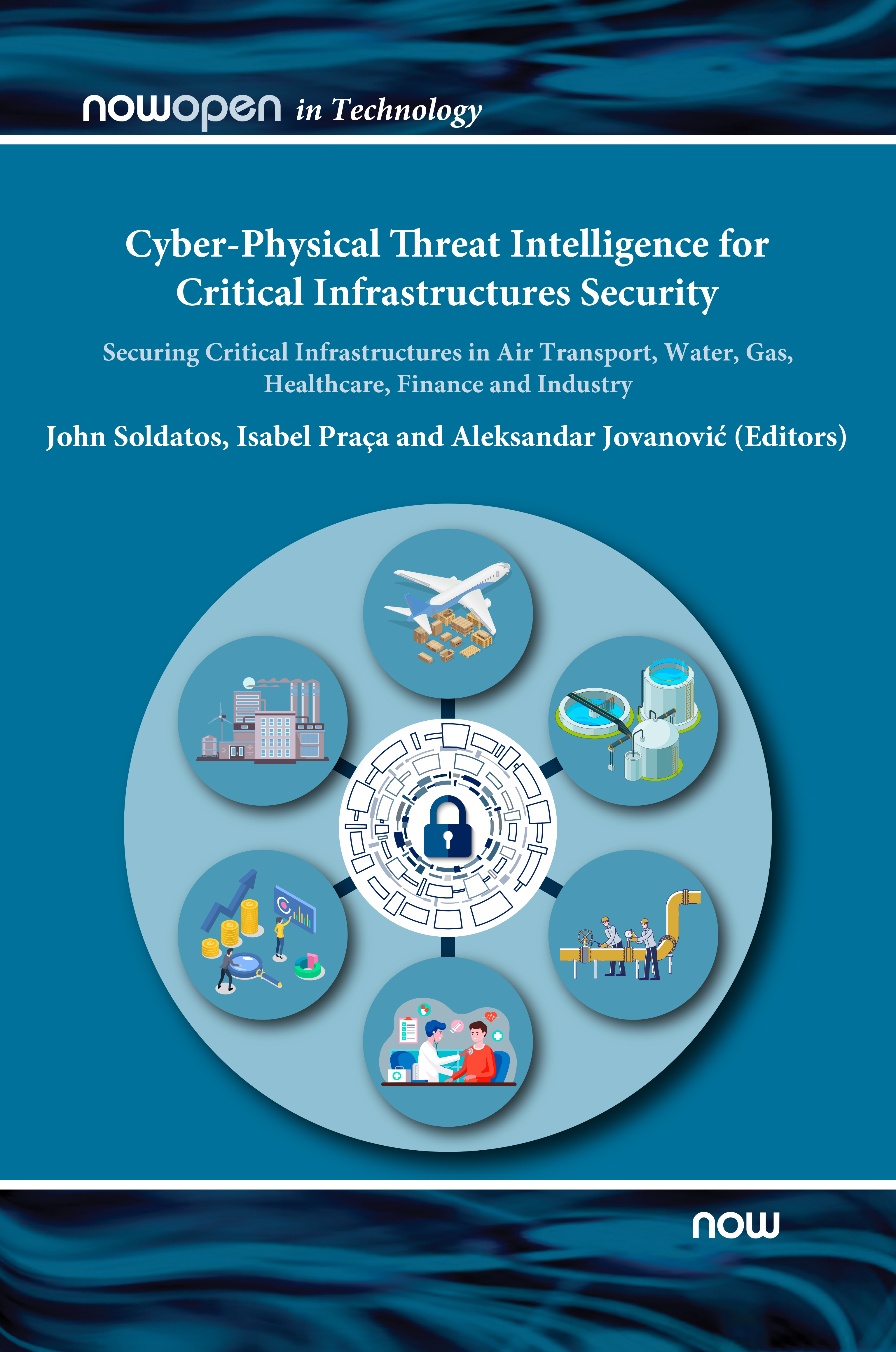Cyber-Physical Threat Intelligence for Critical Infrastructures Security: Securing Critical Infrastructures in Air Transport, Water, Gas, Healthcare, Finance and Industry

Edited by John Soldatos, University of Glasgow, UK and INNOV-ACTS LIMITED | Isabel Praça, Institute of Engineering of the Polytechnic of Porto (ISEP) | Aleksandar Jovanović, Steinbeis Advanced Risk Technologies Group
Publication Date: 15 Sep 2021
Suggested Citation: John Soldatos (ed.), Isabel Praça (ed.), Aleksandar Jovanović (ed.) (2021), "Cyber-Physical Threat Intelligence for Critical Infrastructures Security: Securing Critical Infrastructures in Air Transport, Water, Gas, Healthcare, Finance and Industry", Boston-Delft: now publishers, http://dx.doi.org/10.1561/9781680838237
Downloaded: 109342 times
Description
Modern critical infrastructures can be considered as large scale Cyber Physical Systems (CPS). Therefore, when designing, implementing, and operating systems for Critical Infrastructure Protection (CIP), the boundaries between physical security and cybersecurity are blurred. Emerging systems for Critical Infrastructures Security and Protection must therefore consider integrated approaches that emphasize the interplay between cybersecurity and physical security techniques. Hence, there is a need for a new type of integrated security intelligence i.e., Cyber-Physical Threat Intelligence (CPTI).
This book presents novel solutions for integrated Cyber-Physical Threat Intelligence for infrastructures in various sectors, such as Industrial Sites and Plants, Air Transport, Water, Gas, Healthcare, and Finance. The solutions rely on novel methods and technologies, such as integrated modelling for cyber-physical systems, novel reliance indicators, and data driven approaches including BigData analytics and Artificial Intelligence (AI). Some of the presented approaches are sector agnostic i.e., applicable to different sectors with a fair customization effort. Nevertheless, the book presents also peculiar challenges of specific sectors and how they can be addressed.
The presented solutions consider the European policy context for Security, Cyber security, and Critical Infrastructure protection, as laid out by the European Commission (EC) to support its Member States to protect and ensure the resilience of their critical infrastructures. Most of the co-authors and contributors are from European Research and Technology Organizations, as well as from European Critical Infrastructure Operators. Hence, the presented solutions respect the European approach to CIP, as reflected in the pillars of the European policy framework. The latter includes for example the Directive on security of network and information systems (NIS Directive), the Directive on protecting European Critical Infrastructures, the General Data Protection Regulation (GDPR), and the Cybersecurity Act Regulation. The sector specific solutions that are described in the book have been developed and validated in the scope of several European Commission (EC) co-funded projects on Critical Infrastructure Protection (CIP), which focus on the listed sectors.
Overall, the book illustrates a rich set of systems, technologies, and applications that critical infrastructure operators could consult to shape their future strategies. It also provides a catalogue of CPTI case studies in different sectors, which could be useful for security consultants and practitioners as well.
-
ISBN: 978-1-68083-823-7
602 pp. Open Access (.pdf) This is published under the terms of CC BY-NC
